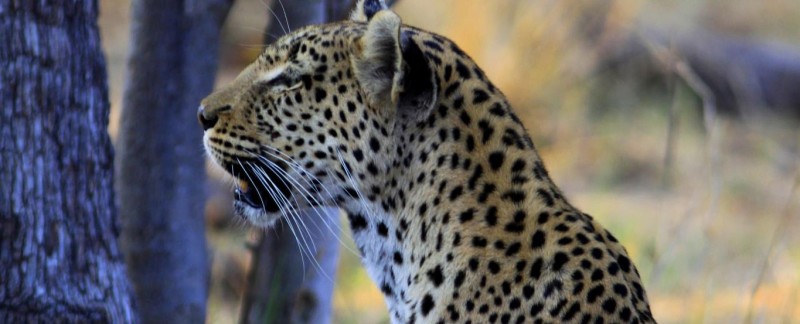To participate and share your images, please join Bush Warriors Photo of the Day Contest group on Facebook, which you can access by clicking here (http://www.facebook.com/
A Leopard Can’t Change it’s Spots
Photo Credit: Fred von Winckelmann
Khwai, Botswana
Here we catch a rare glimpse of an adult African Leopard (Panthera pardus) getting ready to go out for a hunt at night. The Leopard is the most secretive and elusive of the big cats, and it’s rarely seen or photographed this close. The strongest climber of the big cat family spends most of it’s days high up in the trees, sleeping away a whole 2/3 of it’s lifetime! At night, this powerful beast descends down to the jungle floor for dinner.
The leopard was once distributed all across eastern and southern Asia and Africa, from Siberia to South Africa, but its range of distribution has decreased radically because of hunting and loss of habitat. It is now chiefly found in sub-Saharan Africa, though there are fragmented populations in the Indian subcontinent, Sri Lanka, Indochina, Malaysia, Indonesia, and China. Its habitat ranges from rainforest to desert terrains. Because of it’s declining range and population, it is listed as a “Near Threatened” species on the IUCN Red List.
Compared to other members of the Felidae family, the leopard has relatively short legs and a long body with a large skull. It is similar in appearance to the Jaguar (Panthera onca), but it’s smaller and more slightly built (the Jaguar is the smallest of the four “Big Cats”). Its fur is marked with rosettes similar to those of the Jaguar, but the Leopard’s rosettes are smaller and more densely packed, and do not usually have central spots as the jaguars do. Some Leopards and Jaguars are born completely black or very dark, and there are known as black panthers (a melanistic color variant). The species’ success in the wild is in part due to its opportunistic hunting behavior, its adaptability to habitats, its ability to run at speeds approaching 36 mph (58 kilometres per hour), its unequaled ability to climb trees even when carrying a heavy carcass,and its notorious ability for stealth. The leopard consumes virtually any animal that it can hunt down and catch.
To share your wildlife photos with the Bush Warriors community, go to our Photo of the Day Contest Facebook page and upload your shots today! All you need to do is upload them onto the wall. Please do not create new albums, but rather upload each photo on its own. Click here to view ALL of our Photo of the Day winners and for more information on the Bush Warriors Photo of the Day Contest. Enjoy the beauty of nature, just as it was intended to be!
The Bush Warriors Photo of The Day Contest is brought to you in partnership with Creative Visions Foundation. Inspired by the life of Dan Eldon, a young Reuters photojournalist killed in Somalia in 1993, Creative Visions Foundation supports “Creative Activists” who use media and the arts to create positive change in the world.
 Vote for your favorite photo each week. The Bush Warriors Photo of The Week winner will go on to compete for the Bush Warriors Photo of the Month, and a chance to win a signed copy of Dan Eldon: Safari As a Way of Life of life.
Vote for your favorite photo each week. The Bush Warriors Photo of The Week winner will go on to compete for the Bush Warriors Photo of the Month, and a chance to win a signed copy of Dan Eldon: Safari As a Way of Life of life.



